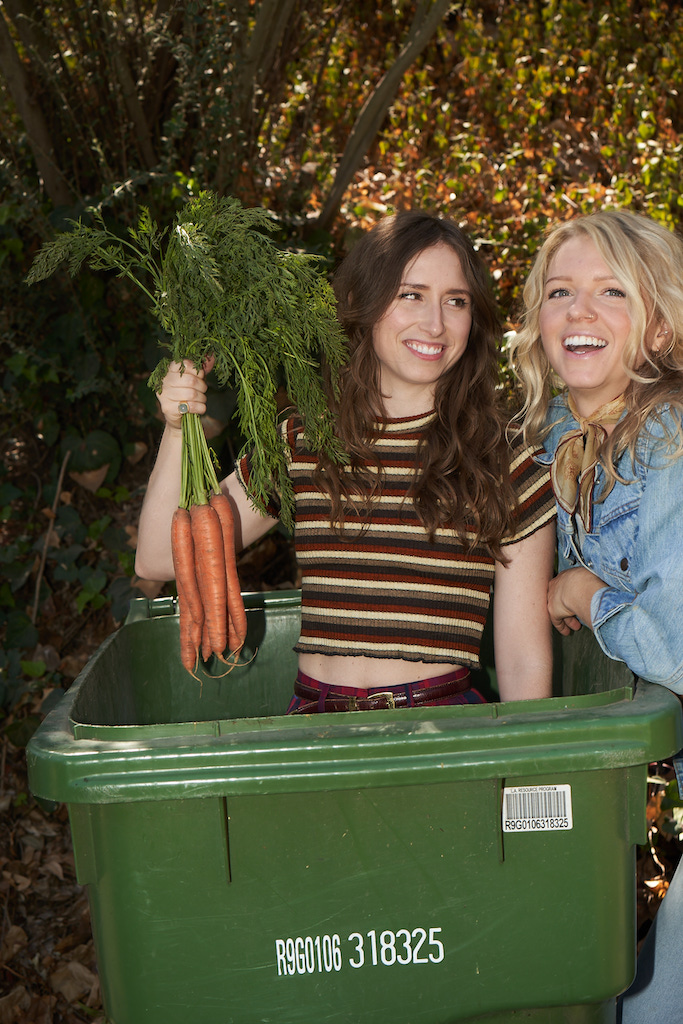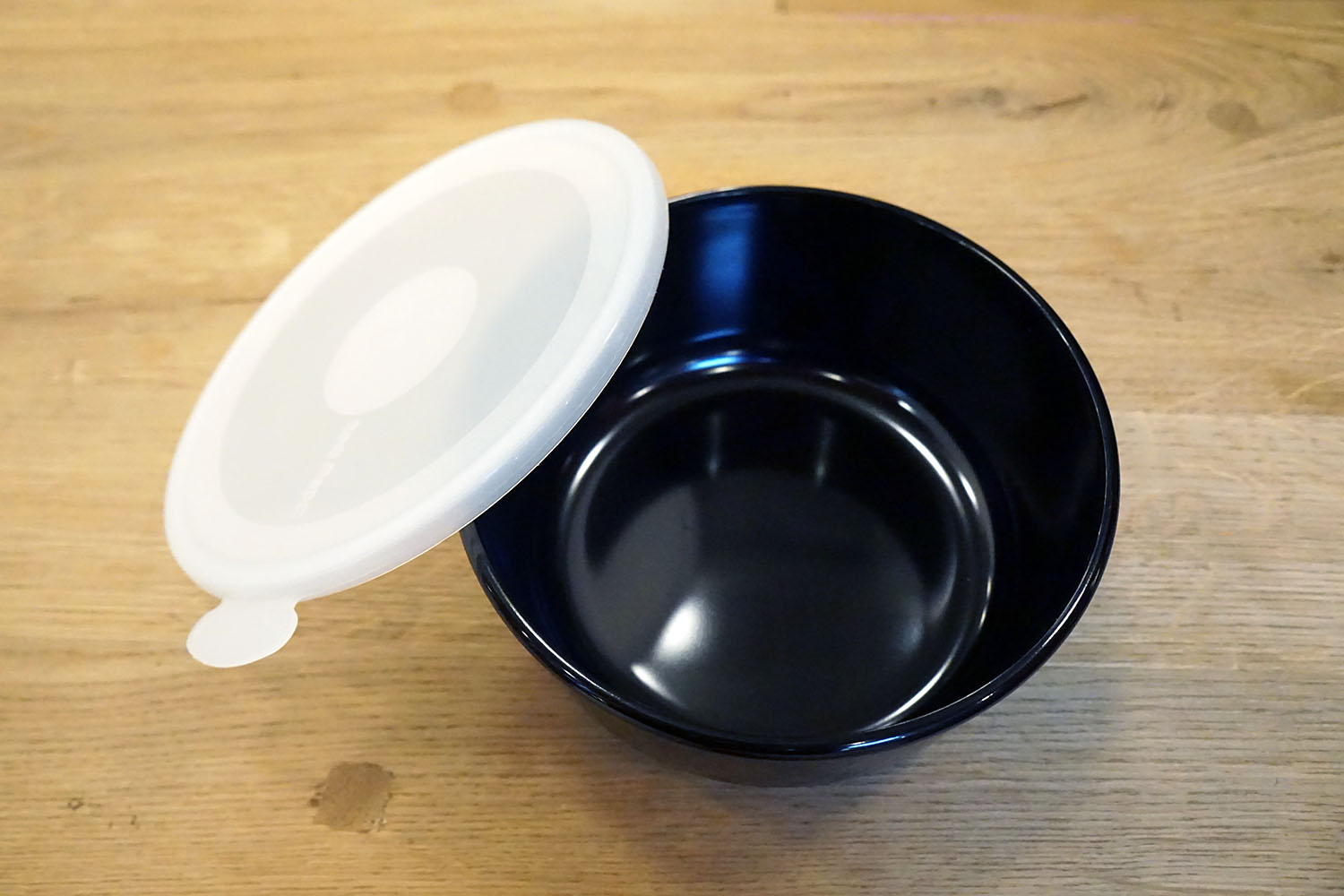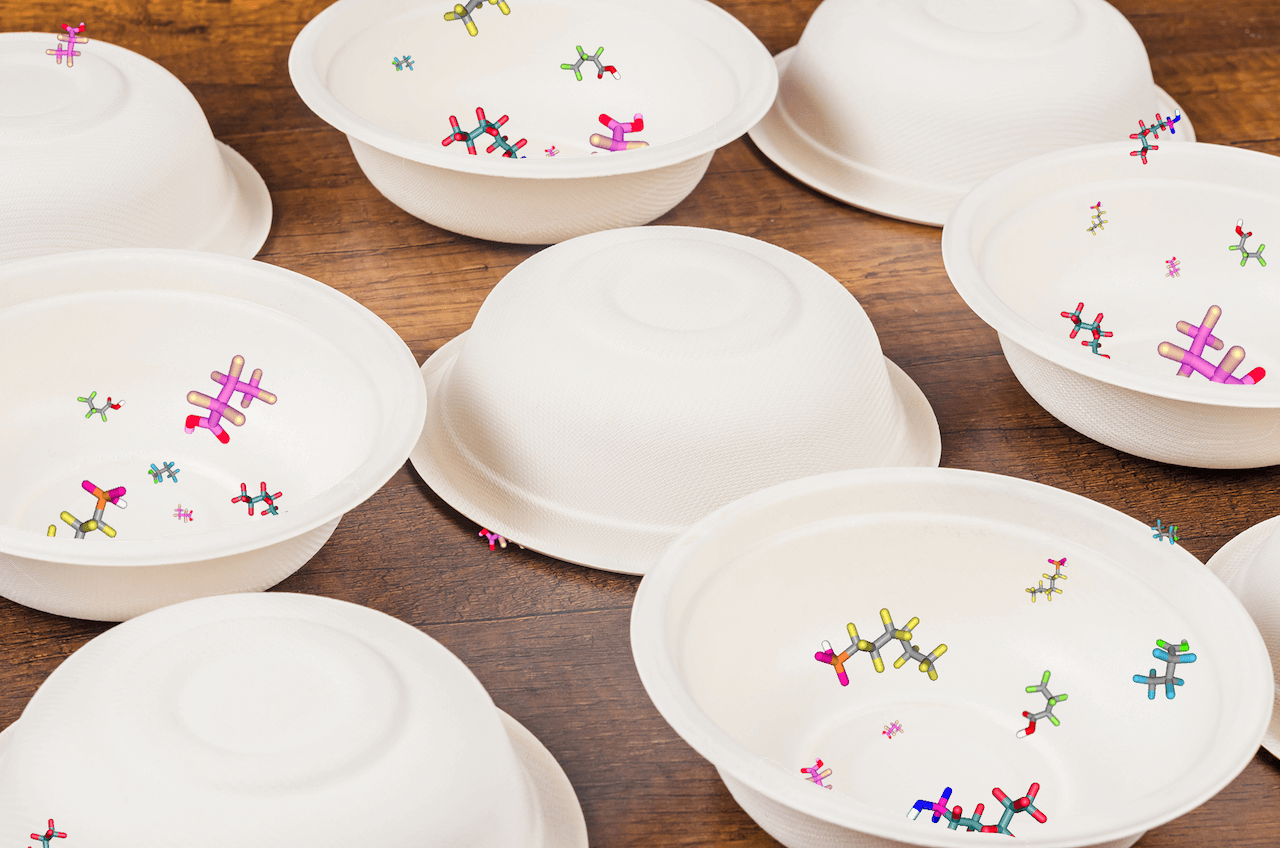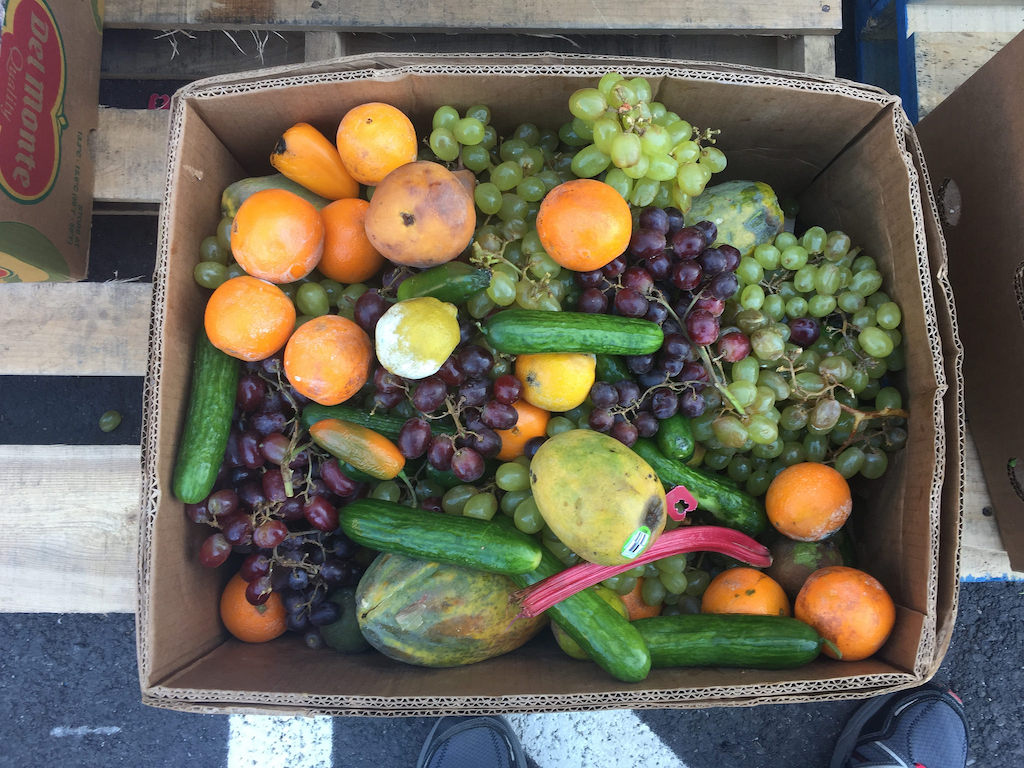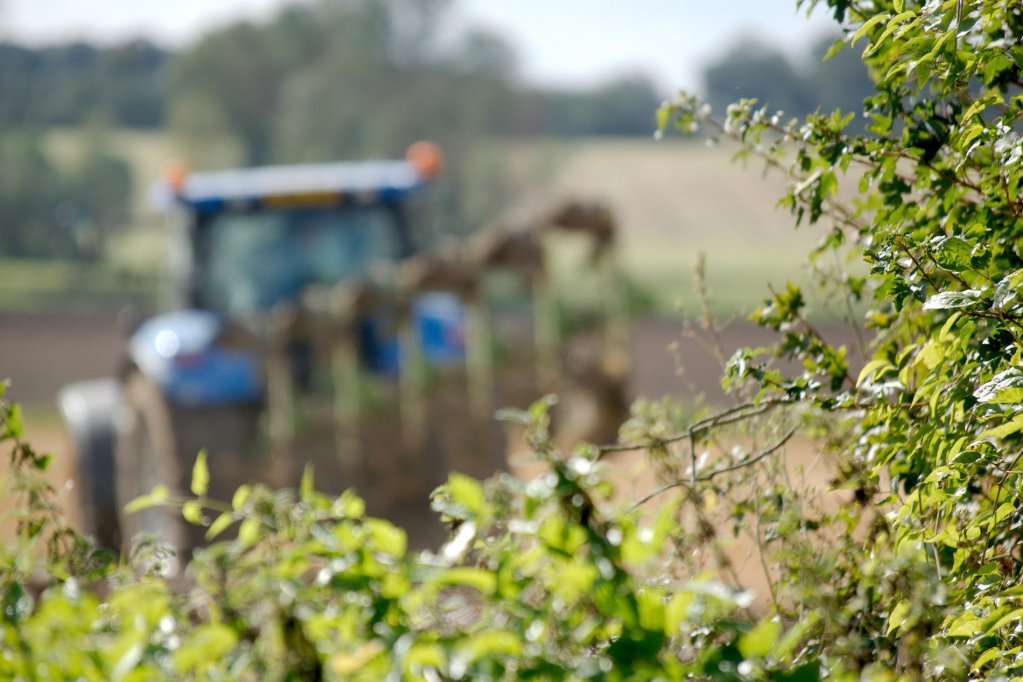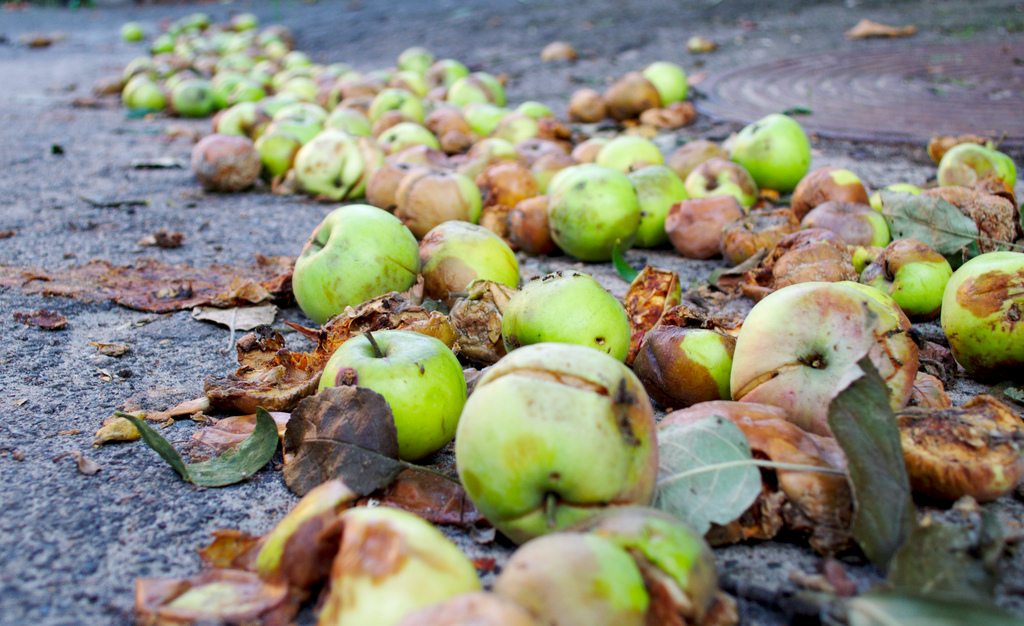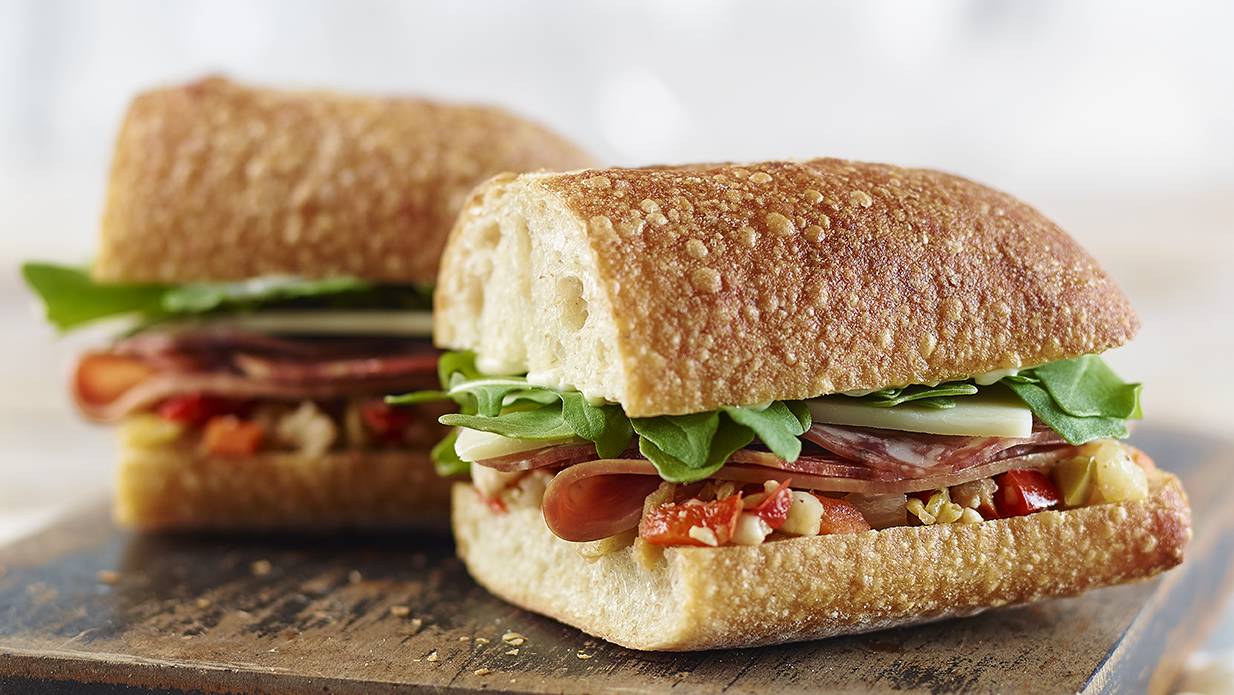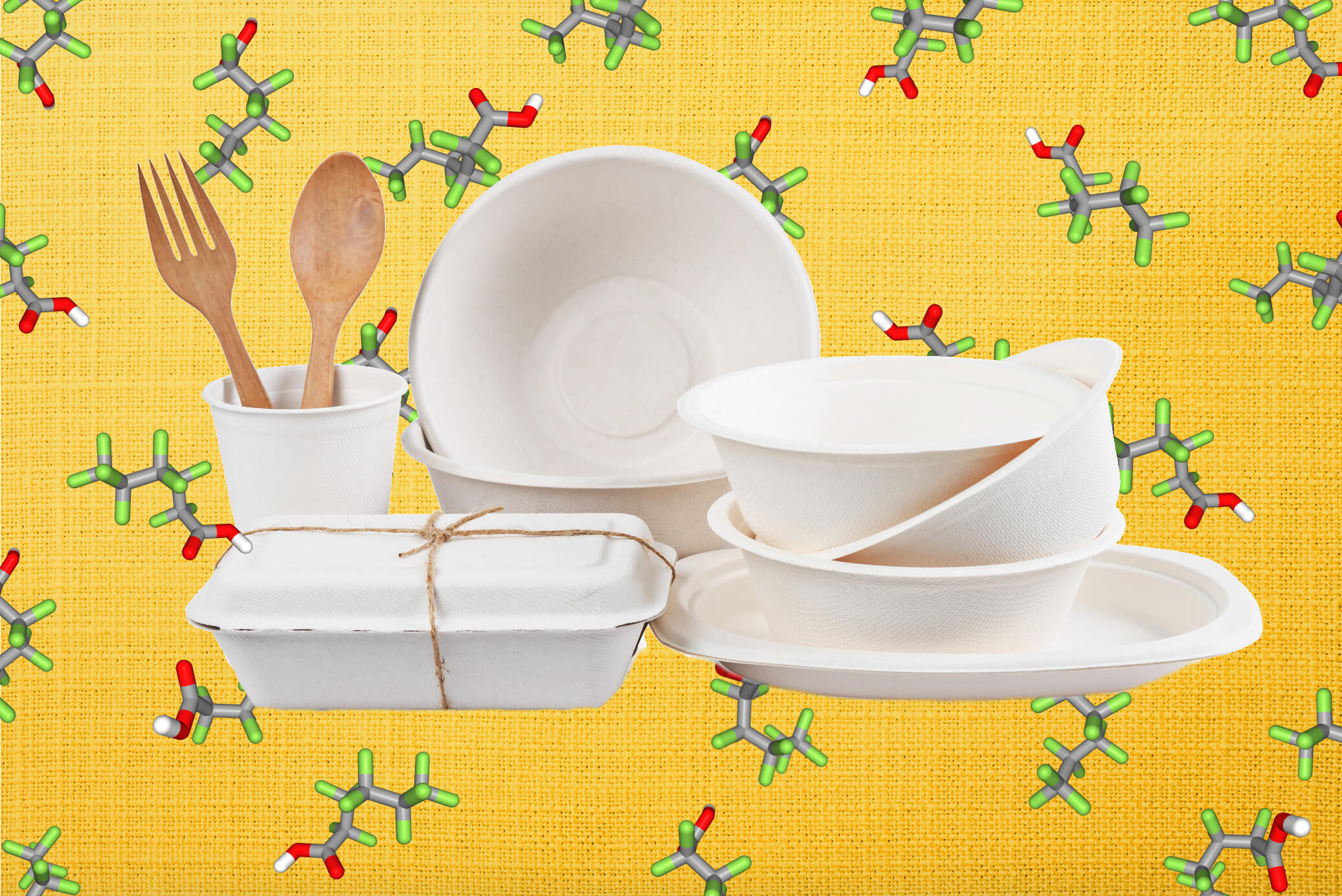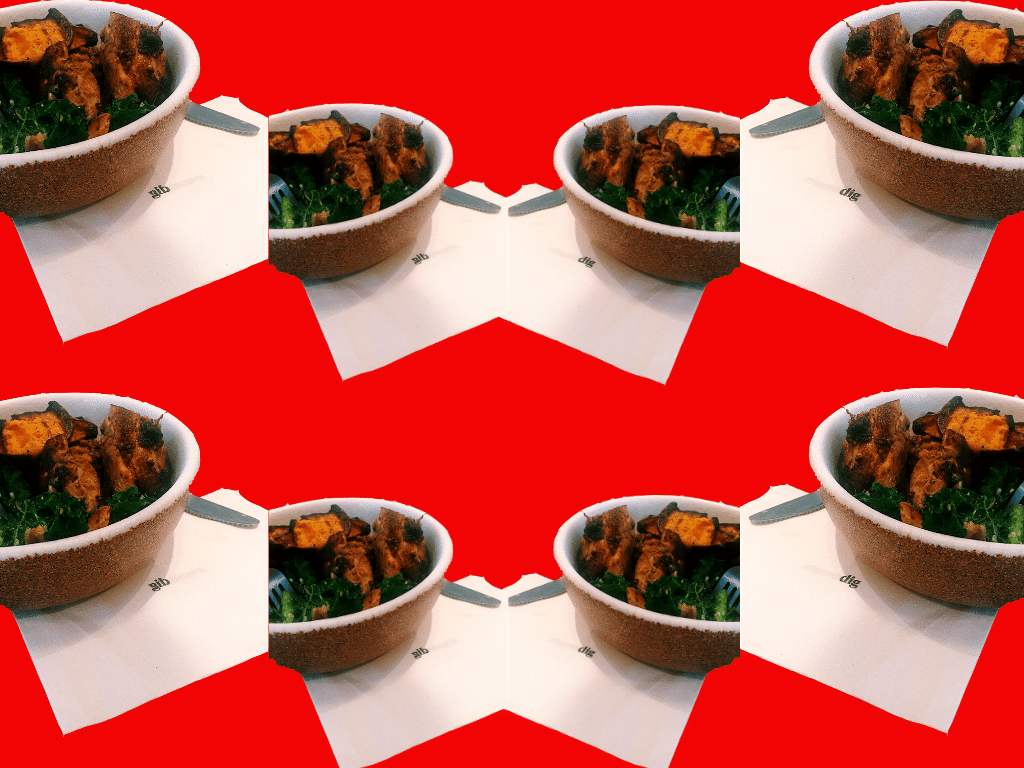
It was still dark when Christina Grace got dressed for work: well-worn jeans and a tee, no-skid shoes and a baseball cap. For a touch of color, apple-green rubber gloves. If you’re going to root around in the garbage, rubber gloves are essential.
Update, 6/3/2019, 12:19pm: We updated language about Just Salad’s relationship with Foodprint, which has not yet been formalized. They are in extended talks about working together.
She headed for a Midtown Manhattan branch of Dig Inn, a quick-service chain that had hired her consulting firm, Foodprint, to analyze its trash, with an emphasis on post-consumer waste—the things customers throw out from the moment they place their orders until they walk out the door.
Disposable grab-and-go meals have become the default preference whether people eat on the run or sit down at a table, and that demand has spawned a booming industry in eco-friendly tableware. It has also led to well-meaning “chaos,” according to Grace: too many types of products, too many ways to dispose of them, inconsistency from one restaurant to the next, sheer volume that strains city services—and lots of human error.
“We’re in the middle ground,” she told me, when we met for her day at Dig Inn, “between good intentions and viable solutions.” Her goal was to find a way out of the confusion.
—
Grace approached Dig Inn about conducting a waste assessment because of its reputation for responsible food practices, from local sourcing of ingredients to a commitment to sustainable farming methods. The chain’s front of house was less consistent. Some of the company’s outlets offered both reusable and disposable dishware while others used only disposables—and Dig Inn planned to double its number of outlets in the next five years, from 25 to 50, so it was time to define a standard approach.
She and two colleagues planned to spend a full day at two of the chain’s busiest New York City outlets, in Midtown and in the Garment District, to measure everything from napkins to avocado peels to order receipts, logging numbers into a customized waste management app they had designed. While her co-workers tackled the kitchen, Grace staked out the dining room.
It’s not the customers’ fault. It’s 70 percent design and 30 percent behavior.
The trash cabinet had two receptacles originally intended for recycling and trash, but she taped handwritten labels around them that read “recycling” and “compost” and set out a small tray for whatever failed to qualify in either category. She quickly decided to suggest adding drains—either built in, at new outlets, or jury-rigged with a container an employee could empty and replace during service. Excess liquid added weight to compost, and often leaked.
—
For starters, almost everyone opted for disposable dishware, even the customers who dined in, which troubled her because of the potential for human error. Some confident diners ate, sorted their dishware and moved on. Some approached Grace like students who weren’t sure if they got the math homework right; they hesitated and waited for her help or approval. One harried customer with his eye on the afternoon dumped everything in the compost receptacle and kept going.
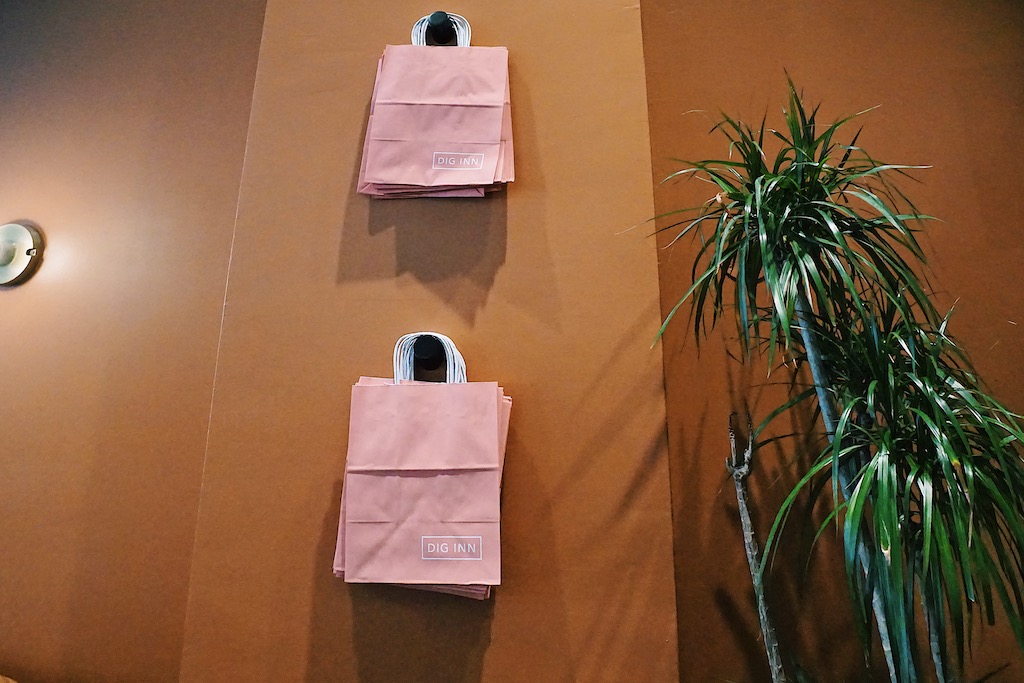
Dig Inn’s to-go bags at a Midtown Manhattan location
Grace immediately stuck her gloved hands into the bin to retrieve his contribution. The bowl was compostable, but the dishware lid, cutlery, beverage cup, lid and straw were supposed to be recycled. She hesitated over a little plastic sauce cup, put on her glasses to peer at the icon stamped on its base, and tossed it in with the recycling. Sometimes, not even an expert knows what to do.
“It’s not easy,” said Grace. “It’s not the customers’ fault. It’s 70 percent design and 30 percent behavior.”
She made a mental note to suggest bulk condiment dispensers, which would eliminate the little cups for eat-in customers, a small but useful change. The real challenge, she believed, was to re-educate diners about how to do the right thing. Lunchtime confirmed her suspicion: Despite the best of intentions, people were unsure of what to do. They made lots of mistakes.
Consumer confusion is one of the biggest obstacles to doing the right thing, according to Bridget Anderson, New York City’s deputy commissioner of the Department of Sanitation’s Bureau of Recycling and Sustainability. “The more homogenous your products are, the better,” she says. “Don’t have 20,000 types of products to throw away.”
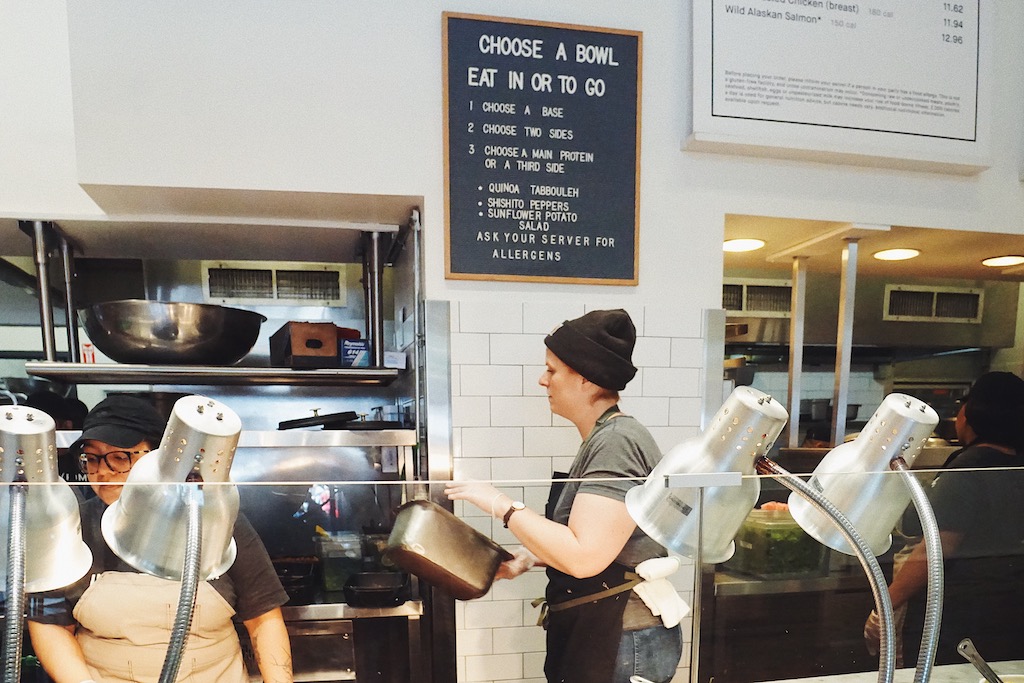
Dig Inn’s newly concieved “eat in or to go” signage at the location Grace analyzed
To which Grace would add: “And don’t use them if you don’t have to.” Grab-and-go culture had seeped into the dining room for no good reason; it was time to go back to durable goods.
She recommended an aggressive front-of-house reboot based on simple math: Reusable dishware cost less than disposables, even with the added costs of water, electricity and staff, and it eliminated the confusion she’d seen. To encourage the switch, she wanted clearer signage at the trash cabinet and the order station, and new scripts for employees.
Six weeks later, a new world order prevailed at the Midtown branch: Reusable bowls, cups, and utensils sat alongside the disposables, with posted ordering instructions that began, “1. Choose a bowl eat-in or to-go,” as though eat-in and reusable were synonymous. Employees asked customers where they planned to dine and directed them to the appropriate tableware—new stainless-steel cutlery, reusable bowls and beverage cups at a station labeled “dine in,” with their disposable equivalents labeled “to go.” The front-of-house trash station was reconfigured with new signage, including illustrations, and a dish bin for reusable ware—although Dig Inn pulled that first attempt, which seemed like too much information for customers to process successfully. The chain is currently auditioning several alternatives, looking for one that provides guidance but does not overload the customer. The drain would have to wait, but Grace recommended that plumbing be built in at the new outlets.
The old hauler was out, replaced by Royal Waste Service, a full-service hauler that provides a “transparent” composting service, according to Elizabeth Meltz, Dig Inn’s senior director of environmental health. Royal delivers compostable materials to McEnroe Farms, about 30 miles north of the city in Westchester, New York, which welcomes visitors who want to see the operation for themselves.
Four more Dig Inn outlets, a mix of upgrades and new sites, will be using the new system by the end of June, with a total of 11 by the end of 2019. In April, the company announced a $15 million investment from Enlightened Hospitality Investments, whose partners include restaurateur Danny Meyer’s Union Square Hospitality Group. But Meltz takes pride in the fact that the front-of-house work was underway before that happened.
“We were working on a pretty aggressive roll-out, so there’s no change,” says Meltz. “I don’t know how we could have done it any faster.”
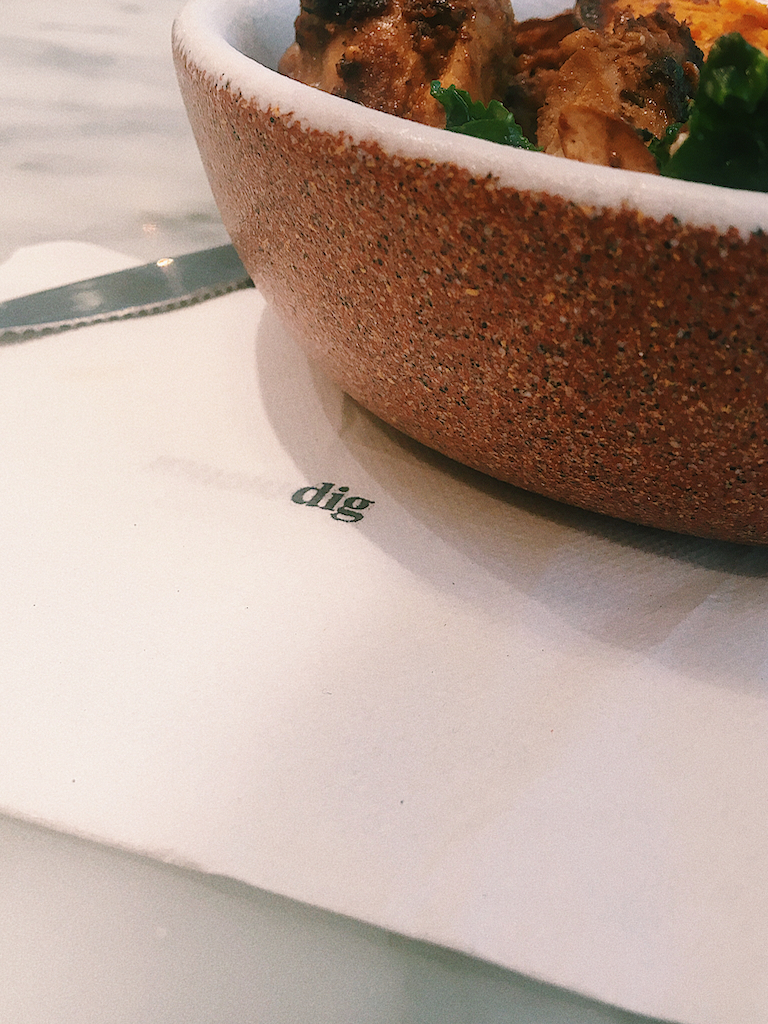
Dig Inn
The “eat-in” dining materials at a Dig Inn location in Manhattan, New York
Smaller businesses, ones that lack the space or staff to handle extra dishwashing for the sit-down crowd, struggle to keep both the customer and the environment happy. Caitlin Sullivan and Kacie Carter own Honey Hi, a little restaurant in the Echo Park neighborhood of Los Angeles that does 40 percent of its business on-site. Since they can’t switch over to reusables entirely, they did extensive research on the best compostable dishware—and have been known to retrieve a single unnecessary to-go lid from a dine-in customer, with the promise of a smaller container if there are leftovers.
It isn’t always easy. They wanted to stock reusable metal straws, which were so nice that customers walked off with them. Their second choice, straws made of hay, were too expensive. They wouldn’t use plastic (Los Angeles has since instituted restrictions on its use), so the only option left was paper, which tends to collapse if a customer lingers over one of the restaurant’s signature smoothies.
“We have a four-year-old regular who came in with his mom,” says Sullivan, “And as she started to unwrap the straw he started crying, just screaming, ‘No paper. No paper.’”
“People take them,” says Carter, “but always with a grimace on their faces.”
—
To-go customers are an even bigger challenge, Grace told me, because they head into a world that does not provide guidance and rarely offers sorting options. “Once they’re out the door we’ve lost them,” she said. Even clearly labeled items are likely to land in a street-corner garbage can or a curbside plastic garbage bag.
And some habits are just hard to break. David Wynn, who owns Triniti, down the street from Honey Hi, says he designed the coffee bar to emulate “a coffee bar in Milan,” where customers stay put, chat with the barista, and drink their coffee out of durable cups.
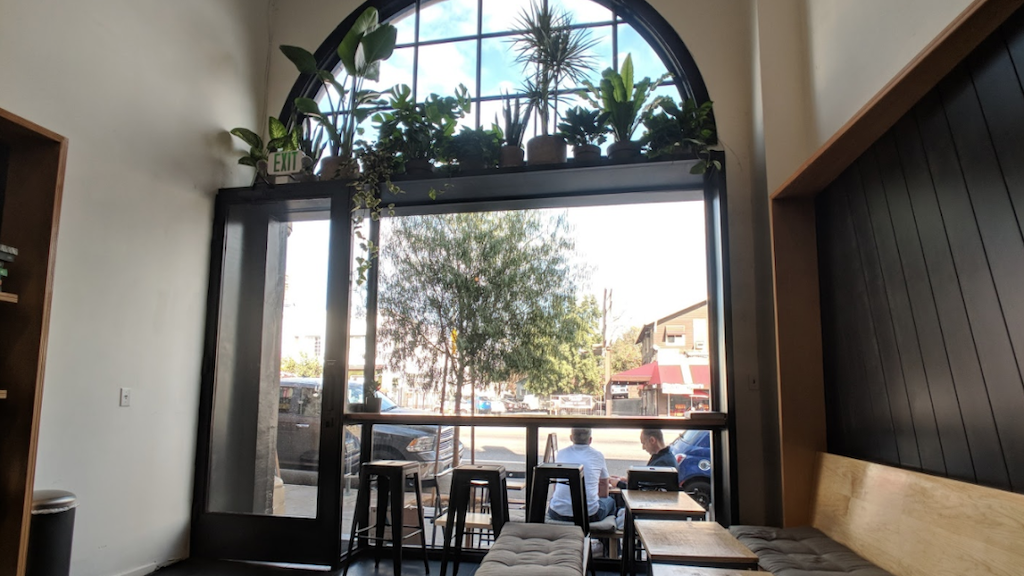
Photograph from the inside of Triniti Echo Park in Los Angeles
Courtesy of Triniti Echo Park
As much as he strives for “interaction, not transaction,” though, half his coffee business is to-go. “We’re not a destination,” he says. “We’re a pass-through on the drive to downtown.” Standard cups are coated in a compost-wrecking plastic film to make them waterproof, but unlined cups tend to sag. The best Wynn can do at the moment is offer a 10 percent discount to to-go customers who provide their own reusable cups.
Honey Hi founders, Caitlin Sullivan (left) and Kacie Carter (right)
At the end of the Dig Inn lunch shift, Grace proudly tallied the front-of-house trash. The compost and recycling bins had been filled more than once. The trash tray held only a Dig Inn soup container, a rubber band, a foil packet of vitamin C supplement, and a beverage cup imported from Dunkin’ Donuts.
But she has a much bigger dream, appropriate for a woman who co-wrote an ambitious zero-waste initiative for New York City. Grace wants to blow right past compostable and recyclable dishware: she envisions a city-wide subscription dish service for grab-and-go diners who buy lunch at a place like Dig Inn, eat at their desks, and drop off the dirty dishes at a convenient kiosk to be picked up, washed, sanitized and returned to circulation. Or people could carry their own dishware. Foodprint is in talks about working with the Just Salad chain, which recently introduced a pilot program allowing customers to supply their own bowls.
The road to enlightenment is paved one stainless-steel fork at a time.
Big clients are listening, at $3,500 minimum for a restaurant assessment and $12,000 for a hotel, though Grace gave Dig Inn a discount because she wanted to have input on the design of new outlets. The two-year-old firm has done work for multiple Eataly outlets (the Italian restaurant and retail marketplace with locations in New York, Los Angeles, Chicago, Boston, and Las Vegas); chef and baker Nancy Silverton’s Mozza restaurant group in Los Angeles; and Manhattan’s Google headquarters, for both a waste assessment and larger theoretical discussions about disposal systems.
The trick, Grace says, is to be patient: the road to enlightenment is paved one stainless-steel fork at a time.
“You can’t change this all at once,” she said. “But we can start to make a dent.”
